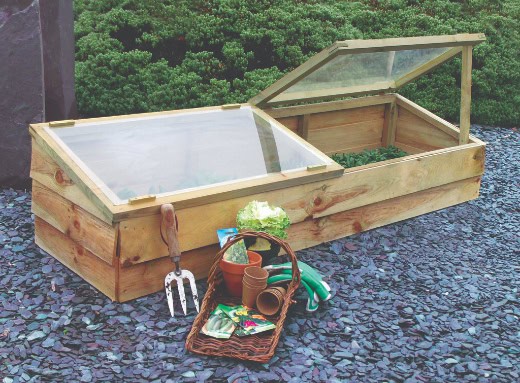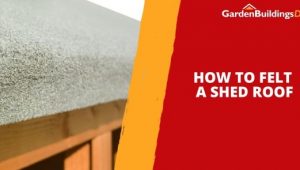Jump to:
Building a budget greenhouse is a great way to start or expand your garden planting, especially if you have limited space. Here are the top tips from our greenhouse team.
DIY Budget Greenhouse Tips
You can pull this off, but don’t rush it. Plan and be practical. Let’s start with:
Frame: Stick to the basics
A-frame or hoop-style greenhouses are cost-effective, but the trick is choosing the materials.
Builders’ plastic conduit or PVC piping works for hoops, but it must be anchored with steel rebar or a treated timber base. Old timber battens or roof laths can also give you a sturdy skeleton for an A-frame.
If you can, avoid making the structure too tall—ideally, just enough for you to stand inside. The higher you go, the more unstable (and expensive) it gets.
Cover: Keep it simple
Standard clear polythene sheeting will do, but don’t stretch it too thin. Go for a UV-stabilised grade if you can, as it’ll last longer without going brittle in the sun.
Double layering with an air gap gives better insulation. That space will be the buffer, holding heat on colder nights. Fix it with battening or clip systems, and avoid using staples or nails.
And if you’re framing the edges, sandwich the plastic between timber strips to keep it from coming loose.
Alternatively, consider a DIY cold frame

Sometimes, the better budget option is building a smaller cold-frame-style module. This is like a mini greenhouse with a clear opening lid, low to the ground. They don’t need full framing or much height, which makes them easier and cheaper to build than a whole structure.
Use old windows, polycarbonate off-cuts, or clear roofing sheets for this approach. These can be linked or expanded over time and don’t need full framing.
A simple setup like this is suitable for seed starting and overwintering plants.
Use raised bed borders as the base
You’re halfway there if you already have raised beds. Basically, the idea is to use the borders, be it timber or brick, as the foundation. This works for cold frames or a basic hoop structure, saving time and materials. This is a method supported by gardening institutions like the RHS.
If not, they’re easy to build. Treated timber is easiest to work with. Avoid pallet wood unless you know it hasn’t been chemically treated.
Best to go with boards that are at least 150mm deep to hold enough soil, and a rectangular bed shape for the frame. Aim for a width you can reach across from one side (around 1.2m max) so you don’t have to step in and compact the soil.
Tips: Line the inside with a damp-proof membrane or weed barrier before filling it. You can then add lift-off panels or lids (optional) to make access easier.
Or Skip the Hassle with Our Affordable Wooden Greenhouse Kits
Building your own greenhouse can be rewarding, but let’s be honest—it’s not for everyone. Time, tools, and other hurdles can turn a weekend project into a month-long headache. That’s where our wooden greenhouse kits come in.
Our affordable, smaller models provide the insulation, airflow and planting space you need. And don’t worry; you still get the satisfaction of assembling it yourself, just without having to source materials, cut everything to size, or hope it holds up in bad weather.
Not sure which one to choose? Our greenhouse buying guide has all the information you need.
For enquiries, don’t hesitate to get in touch with our team. We’re happy to help—give us a call on 01909 768840.
Up next on your reading list: How to Set Up Your Greenhouse for Success





